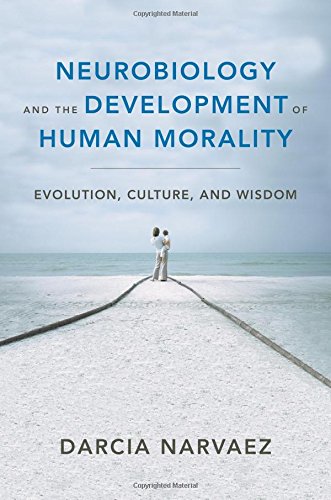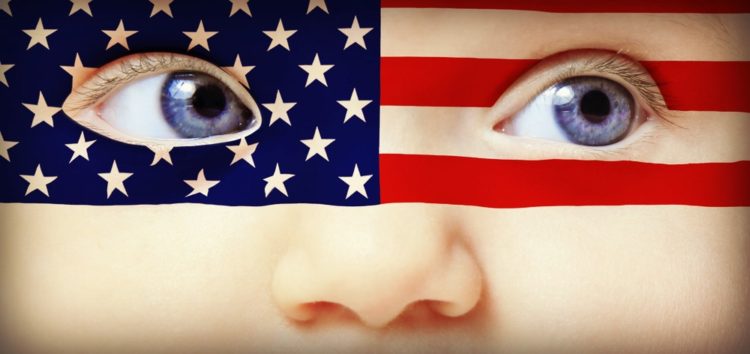Make America’s Children Great Again, Part 2: Affection
Human babies (at full term birth) look and act like fetuses for about 18 months! Yes, it is a shock. A baby should be in the womb that much longer to grow what is needed to be able to move around the world like other newborn animals who can feed themselves shortly after birth. A fetus still has much to grow before they are ready to face the world and for humans part of “fetal development” happens after birth in the fourth, fifth, sixth, seventh, eighth and ninth trimesters. It’s not just the body that grows bigger. Most importantly, a human baby’s head grows enormously during those 18 months, the biggest reason for an early exit from the womb.

The top of baby’s head has plates that are flexible, fusing into hardness after about 18 months. Why would this be? There is much to finish and grow during those months, including neural networks based on experience. Head size growth in the first year of life is related to intelligence (Gale, 2006). Physical affection during that time period helps the brain and body grow properly into an intelligent and happy creature.
The brain is shaping systems like the functioning of the stress response (Lupien et al, 2009), the oxytocin system which is related to social bonding (Carter, 2003), along with many other systems.
What is baby expecting/needing in this fetal postnatal period? The evolved nest.
One aspect of the evolved nest is affectionate touch—carrying, holding, rocking, skin-to-skin contact—which promotes proper, normal, optimal growth after birth.
In reports about children’s health by international organizations, affectionate touch is often not discussed. I think this is because it is not an issue in developing countries where concerns about child health are typically focused. Developing nations still offer their babies many of the characteristics of the evolved nest, including affection.
But in industrialized nations, humanity’s evolved nest is often undermined and degraded, including the vast affectionate touch needed to grow well.
In my lectures, I show pictures of young children’s average experiences in preindustrial societies and the USA. The first set of photos show young children being held most of the time, carried in arms or wraps. The photos from the USA show how children typically spend much of every 24 hours — isolated in playpens, carriers, strollers, or cribs.
Why is physical affection, or positive touch, so important? Touch has significant effects on a growing brain and body. Here are a few examples.
(1) The signs of affection are carried the rest of life at a molecular level. Children who received less touch in the first months of life look developmentally delayed in adolescence, at the molecular level.

(2) Skin to skin contact with infants is especially valuable. It promotes healthy sleep cycles, adaptive behavioral arousals, exploratory activities, social and cognitive functioning (Field, 1995; James McKenna). It also helps parents early on tune into their infant’s signals so they can be responsive to needs and communications. This is another key factor for optimizing children’s normal development.
(3) Mammals need touch to synthesize DNA and grow (Schanberg, 1995). Neglected (untouched) children have significantly smaller brains.
(4) Separating a mammal baby from mother dysregulates multiple systems, from respiration to heart rate (Hofer, 1994). Mammalian animal studies show that physical separation from mother increases pain and decreases opioidsand oxytocin and has epigenetic effects (e.g., genes not “turned on” or “off”) (Ladd et al, 1996; Meaney, 2001: Panksepp, 2003; Sanchez et al., 2001).
For example, Meaney and colleagues have shown that a rat pup who does not have high nurturing touch in the first 10 days misses the time period for “turning on” genes related to controlling anxiety for the rest of life. As a result, whenever something new comes up, the offspring becomes anxious—unless drugs are given. The equivalent time period for turning on such genes is the first 6 months of life, when in our 2 million years of evolutionary history babies would have been carried and in touch with caregivers 24/7.
(5) Cosleeping (safely) helps a baby learn to regulate breathing and other systems (Mckenna, 2008). In fact, safe bedsharing and breastfeeding (breastsleeping) are an evolutionary inheritance that optimizes infant growth and wellbeing. (For guidance on safe cosleeping and bedsharing see James McKenna’s website.)
Harry Harlow’s (1958) monkey experiments (which are social mammals like humans) showed that lack of maternal affectionate touch caused lifelong changes in stress responsivity, deficits causing impulsive violent and antisocial behavior, causing depressive and autistic behavior later in life.

How society can support affectionate touch in early life (a few suggestions):
- Promote hospital practices that are “baby-friendly.” Avoid separating mom and baby and allow mom and baby skin-to-skin contact, getting their physical affection off to a good start.
- Extended paid parental leave, which is provided in other nations, allows parents the time to be responsive and caring, which includes affectionate touch.
- Day care providers also can provide responsive affectionate touch nearly constantly for infants.
- Breastfeeding is also a way to get skin to skin contact of a particular, important sort.
In sum, affectionate touch has long lasting health effects: (1) Prevents excessive stress (2) Prevents hippocampal dysfunction (control of anxiety) (3) Establishes and maintains social bonding.
It’s never too late. I introduced hugging into my family when I was 19. You can do so too and enjoy health benefits.
Series
References
Carter, C.S. (2003). Developmental consequences of oxytocin. Physiology and Behavior, 79(3), 383-397.
Field, T. (1995). Touch in early development. New York: Psychology Press.
Gale, C.R., O’Callaghan, F.J., Bredow, M., Martyn, C.N., & Avon Longitudinal Study of Parents and Children Study Team (2006). The Influence of head growth in fetal life, infancy, and childhood on intelligence at the ages of 4 and 8 years. Pediatrics, 118(4), 1486-1492.
Harlow, H. (1958). The nature of love. American Psychologist, 13, 673-685.
Hofer, M.A. (1994). Hidden regulators in attachment, separation, and loss. In N.A. Fox (Ed.), Emotion regulation: Behavioral and biological considerations. Monographs of the Society for Research in Child Development, 59, 192-207.
McKenna, J. (2008). Cosleeping and Biological Imperatives: Why Human Babies Do Not and Should Not Sleep Alone, in Neuroanthropology [online].
Ladd, C.O., Owens, M.J., & Nemeroff, C.B. (1996). Persistent changes in corticotropin-releasing factor neuronal systems induced by maternal deprivation. Endocrinology, 137, 1212-1218.
Lupien, S.J., McEwen, B.S., Gunnar, M.R., & Heim, C. (2009). Effects of stress throughout the lifespan on the brain, behaviour and cognition, Nature Reviews Neuroscience, 10(6), 434-445.
Meaney, M. J. (2001). Maternal care, gene expression, and the transmission of individual differences in stress reactivity across generations. Annual Review of Neuroscience, 24, 1161–1192.
Panksepp, J. (2003). Feeling the pain of social loss. Science, 302(5643), 237-239.
Sanchez, M.M., Ladd, C.O., & Plotsky, P.M. (2001). Early adverse experience as a developmental risk factor for later psychopathology. Development and Psychopathology, 13 (3), 419-449.
Schanberg, S. (1995). The genetic basis for touch effects. In T. M. Field (Ed.), Touch in early development (pp. 67-80). Mahwah, NJ: Erlbaum.

